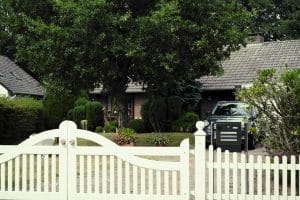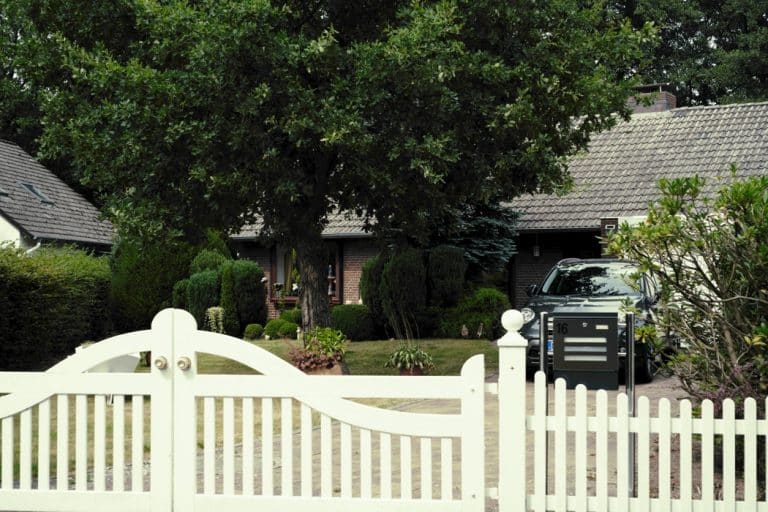When you’ve just spent hundreds or even thousands of dollars on a new appliance, the temptation to save a little extra by rushing through installation or cutting corners can be strong. However, proper appliance installation isn’t just a recommendation.
It’s a critical investment that protects your home, your wallet, and your family’s safety. The difference between a correctly installed appliance and a hastily connected one can mean thousands of dollars in water damage, electrical repairs, or premature appliance failure.
The Hidden Costs of Improper Installation
Every year, insurance companies process millions of dollars in claims directly related to improperly installed appliances. Water damage from incorrectly connected washing machines alone accounts for some of the most expensive homeowner insurance claims, often ranging from $5,000 to $50,000 depending on the extent of damage. These disasters don’t happen
immediately. They develop over weeks or months as loose connections gradually fail or improper drainage slowly damages your home’s structure.
Consider the real cost breakdown of poor installation. A washing machine with an improperly secured drain hose might seem fine for months until it works loose during a heavy load, flooding your laundry room and seeping into adjacent rooms. The resulting damage could include warped flooring ($3,000-$8,000), damaged drywall and insulation ($2,000-$5,000), mold remediation ($1,500-$6,000), and replacement of damaged belongings. All of this from a connection that would have taken an extra five minutes to properly secure.
Electrical issues from improper installation present even more serious risks. Using undersized wiring, incorrect outlets, or makeshift electrical connections doesn’t just risk appliance failure. It creates genuine fire hazards. The National Fire Protection Association reports that faulty appliance installation and maintenance contribute to thousands of house fires annually, with dryers being particularly problematic when venting isn’t properly configured.
Why Professional Installation Standards Matter
Professional installers follow manufacturer specifications and building codes that exist for crucial reasons. These standards aren’t arbitrary rules. They’re based on decades of engineering data and safety research. When manufacturers specify certain clearances, electrical requirements, or water pressure ratings, they’re ensuring optimal performance and preventing
dangerous operating conditions.
Take refrigerator installation as an example. Manufacturers typically require specific clearances around the unit for proper ventilation. Ignoring these requirements might save space, but it forces the compressor to work harder, increasing energy costs by up to 20% and potentially shortening the appliance’s lifespan by several years. A refrigerator that should last 15
years might fail in 8-10 years simply due to inadequate ventilation during installation.
Gas appliances require particular attention to safety standards. Proper gas connections must be leak-tested, venting must meet specific requirements for carbon monoxide safety, and shut-off valves must be easily accessible. Professional installers understand these requirements and have the tools to ensure compliance. The cost of professional installation for gas
appliances is minimal compared to the catastrophic risks of gas leaks or carbon monoxide poisoning.
Common Installation Mistakes and Their Expensive Consequences
Understanding what can go wrong helps illustrate why proper installation matters so much. With washing machines, failing to level the unit causes excessive vibration that damages the machine’s components, creates noise issues, and can actually
cause the machine to “walk” across the floor, potentially disconnecting water lines. The shipping bolts that stabilize the
drum during transport must be removed before use. Leaving them in place will destroy the suspension system within just a few cycles, turning your new washer into expensive scrap metal.
Dishwasher installations frequently suffer from drainage problems when the drain hose isn’t properly looped. Without this high loop or air gap, dirty water can siphon back into your dishwasher, contaminating clean dishes and potentially causing health issues. Additionally, dishwashers that aren’t properly secured to cabinets can tip forward when loaded, potentially injuring someone or damaging your flooring.
Dryer installation mistakes often center on venting. Using plastic or vinyl ducts instead of rigid metal creates lint buildup that restricts airflow and becomes a serious fire hazard. Venting that’s too long or has too many turns forces the dryer to work harder, extending drying times and increasing energy costs by 30-40%. Worse, improper venting can allow moisture to accumulate in walls, causing mold growth and structural damage that might not become apparent for years.
Refrigerator water line connections for ice makers and water dispensers need special attention. Using the wrong type of tubing or failing to properly secure connections leads to slow leaks that damage flooring and create ideal conditions for mold growth behind and under the appliance. These hidden leaks often go unnoticed until significant damage has occurred.
The Warranty Factor
Here’s something many homeowners don’t realize: improper installation can void your appliance warranty. Manufacturers clearly state that warranty coverage requires professional installation or installation according to their specific guidelines. When you file a warranty claim for a malfunctioning appliance, one of the first things service technicians check is whether the unit was properly installed.
Imagine your $1,200 washing machine develops a problem after six months. The manufacturer’s technician discovers you used rubber hoses instead of stainless steel braided ones, or that the unit wasn’t properly leveled. Your warranty claim is denied, and you’re facing either expensive repairs or replacement. All because you tried to save $150 on professional installation.
Essential Guidelines for DIY Installation
If you’re confident in your abilities and choose to install appliances yourself, following proper procedures is non-negotiable. Start by reading the entire installation manual before beginning. Not just skimming it, but understanding every requirement and warning. Gather all necessary tools and supplies beforehand, including a level, appropriate wrenches, voltage tester, and any specialized connectors required.
For washing machine installation, always use new stainless steel braided hoses, even if the old ones look fine. Ensure the machine is perfectly level using adjustable feet, checking both front-to-back and side-to-side levels. The drain hose must be
secured at the proper height (usually 39-96 inches) to prevent siphoning. Install water hammer arrestors to protect both your plumbing and the machine from pressure surges. Run a complete cycle without clothes, checking for leaks at every connection point.
Dishwasher installation requires careful attention to three systems: water supply, drainage, and electrical. The water supply line should have an easily accessible shut-off valve. The drain hose must be looped high under the counter or connected through an air gap to prevent backflow. Electrical connections must meet code requirements. Never use extension cords or modify plugs. The unit must be securely fastened to prevent tipping.
Dryer installation demands respect for both electrical and venting requirements. Electric dryers require 240-volt outlets with appropriate amperage ratings. Never modify plugs or outlets to make them fit. Gas dryers need proper gas connections that should be tested with soap solution for leaks. Venting must use rigid or semi-rigid metal ducting, keeping runs as short and straight as possible. Clean existing venting thoroughly before connecting a new dryer.
Refrigerator installation seems simple but has several critical requirements. Allow the unit to stand upright for at least 4
hours if it was transported horizontally. Ensure proper clearances on all sides for ventilation. When connecting water lines
for ice makers, use only copper or braided stainless steel lines, never plastic. Install a water filter if your water is hard or contains sediments.
When to Call Professionals Without Hesitation
Certain scenarios always warrant professional installation, regardless of your DIY confidence. Any gas appliance installation should be handled by certified professionals who can ensure safe connections and proper venting. This isn’t just about following codes. It’s about preventing potentially fatal carbon monoxide poisoning or gas explosions.
Electrical work beyond simple plug-in connections requires professional handling. If you need new circuits, outlet upgrades, or any modifications to your electrical panel, call a licensed electrician. The same applies to any installation requiring plumbing modifications beyond simple connection to existing valves.
Built-in appliances like integrated refrigerators, cabinet-mounted microwaves, or built-in dishwashers often require precise measurements and modifications that professionals handle daily. Their experience prevents expensive mistakes like ordering wrong-sized units or damaging cabinets during installation.
If you’re unsure about any aspect of installation, it’s worth consulting professionals. Companies like EasyFix Appliance Ltd offer expert installation services that ensure your appliances are set up correctly from day one. Their experienced technicians understand manufacturer requirements and local codes, providing peace of mind that your investment is protected.
Long-Term Benefits of Proper Installation
Correctly installed appliances operate more efficiently, using less energy and water while delivering better performance.
This efficiency translates directly to lower utility bills. Properly installed and vented dryers can save $50-100 annually in energy costs alone. Across all your major appliances, proper installation could reduce utility costs by several hundred dollars yearly.
Appliance longevity improves dramatically with proper installation. A washing machine that’s correctly leveled and connected experiences less stress on components, potentially adding 3-5 years to its lifespan. For a typical household’s major appliances, proper installation could delay replacement costs by thousands of dollars.
Safety and peace of mind represent invaluable benefits. Knowing your gas connections are secure, your electrical loads are properly managed, and your water connections won’t fail provides immeasurable value. You can leave for vacation without worrying about returning to water damage or run your dryer without fire concerns.
Professional Installation: A Worthy Investment
Professional installation typically costs between $100-300 per appliance, depending on complexity and local rates. This investment provides expertise in handling unexpected situations, proper tools for secure connections, knowledge of local
codes and requirements, and often includes a labor warranty on the installation work. Many professional services also haul away old appliances, saving you disposal hassles.
When selecting an installation service, choose companies with proven experience and proper licensing. EasyFix Appliance Ltd’s installation services provide comprehensive installation that includes checking existing connections, ensuring code compliance, and explaining proper operation and maintenance to homeowners. Their technicians are trained on all major
brands and stay current with manufacturer requirements.
Maintenance After Installation
Proper installation sets the foundation, but maintaining that installation ensures continued safe operation. Periodically check water connections for signs of wear or leaks. Inspect dryer venting annually and clean as needed. Ensure appliances remain
level as houses settle over time. Keep clearances clear. Don’t let items accumulate around refrigerators or dryers that could restrict ventilation.
Document your installation with photos of connections, model and serial numbers, and installation dates. This documentation proves valuable for warranty claims and helps future service technicians understand your setup. Keep installation manuals and warranty information organized and accessible.
Conclusion: The True Value of Getting It Right
Proper appliance installation represents one of the best investments in your home’s safety, efficiency, and value. While the temptation to rush through installation or save money by cutting corners might seem appealing, the potential consequences far outweigh any immediate savings. Water damage, electrical fires, voided warranties, and premature appliance failure can cost thousands of dollars and create genuine safety hazards for your family.
Whether you choose professional installation or tackle it yourself with meticulous attention to requirements, proper installation pays dividends through improved efficiency, extended appliance life, and invaluable peace of mind. The few hours and modest cost invested in correct installation prevent years of potential problems and expenses.
Remember that resources are available when you need them. Professional installation services ensure everything is done correctly from the start, protecting your investment and your home. By prioritizing proper installation, you’re not just connecting an appliance. You’re ensuring years of safe, efficient, and trouble-free operation that makes your daily life easier and your home more valuable.
Taking the time to ensure proper installation, whether doing it yourself with careful attention to guidelines or hiring qualified professionals, demonstrates wisdom that pays off every day your appliances operate safely and efficiently. In home improvement, few investments offer better returns than properly installed appliances that work correctly from day one and
continue performing reliably for years to come.













